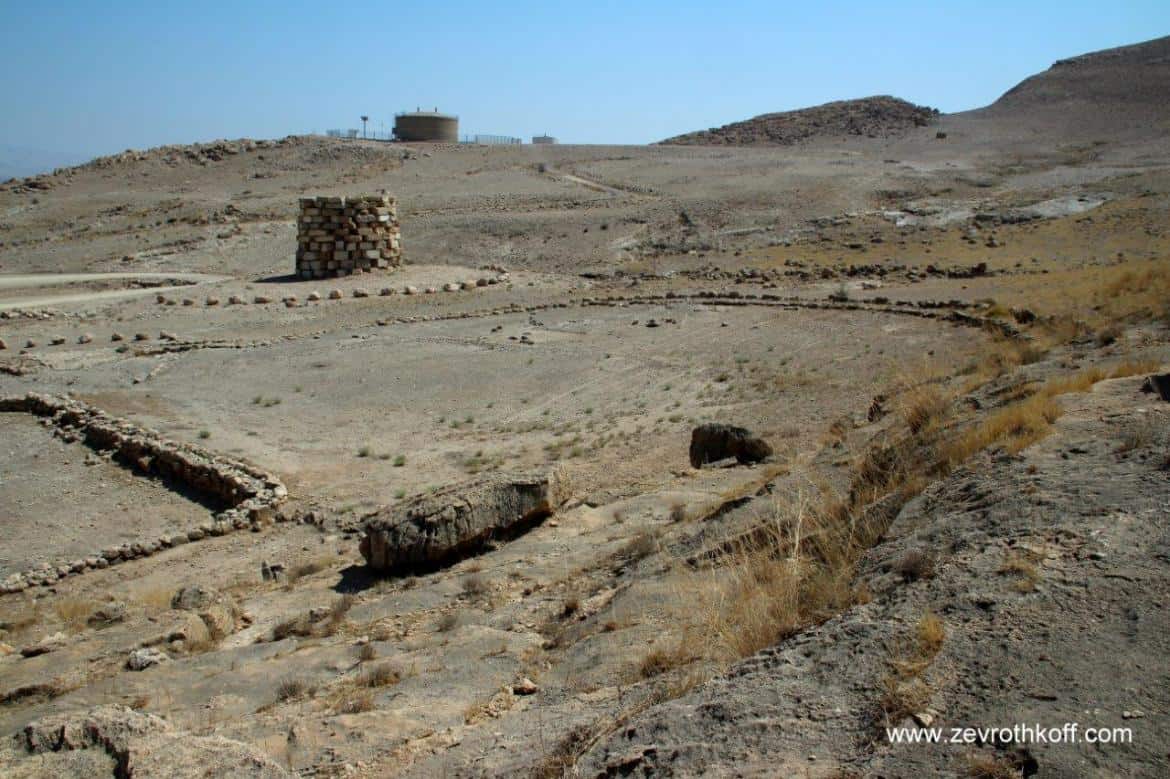In the burning heat of the Jordan Valley, a senior archeologist disabled from war strides quickly with a group of students following him. He is observing his surroundings with the eyes of a man who has already encountered and seen everything. But suddenly, his eyes fall upon something he has never seen before – an exceptional archeological surprise.
The archeologist is Professor Adam Zertal who devotes his life to an unprecedented endeavor: an archeological overview of the area of Shomron and the Jordan Valley. During his overview, Zertal found close to a thousand ancient sites of which 85% were previously unknown. Among other things, from this overview, archeologists learnt how settlements spread throughout different time periods and how demographic changes occurred, such as the dramatic population increase in the Jordan Valley and the mountain ridge during the iron age. Zertal recognized a transition from Canaanite settlements to Israelite settlements and hence, he followed the journey of settlement of the Children of Israel after they crossed the Jordan from the plains of Moab to their homeland.

However, the discoveries did not end there. Professor Zertal found that besides the Israelite and Canaanite settlements, there were different sites that did not resemble any known archeological remains. The sites consisted of low stone walls forming the shape of a sandal. In their center, an elevated stage was located and the structure was surrounded by a path for processions. Inside the structure, kosher animal bones and pottery shards were found. Prof. Zertal called them “footprint sites” and identified them as pagan sites from the time period of the settlement of the land of Israel. At that moment, the only questions which remained were: what were these sites, what were they used for and were they described or hinted at in the Old Testament?
From Egypt to the Jordan Valley
In order to try to decipher the riddle, archeologists turned to the shape of the site and tried to identify symbols similar to those from the country the Israelites had come from: Egypt. The Egyptian culture is rich in footprint symbols emblematizing the power and victory of the pharaoh over his enemies. Already at that time period, the Hebrew idioms “to be under his foot” or “to fall to his feet” signifying submission and the acceptance of authority (similar to the English idiom “to sit at one’s feet (to be in a position of devotion to someone, to pay homage or reverential attention to someone)) existed. In the grave of the Egyptian pharaoh Tutankhamun, the pharaoh’s sandals were found with depictions of prisoners from different peoples and symbols of enemy states on their soles. Stepping on those soles symbolized the power and victory of the pharaoh over his enemies.
In other cultures, the use of the sole of a foot symbolized human existence, as footprints are what is left after humans pass, even if the person itself is long gone. Likewise, footprints also symbolized God’s foothold on earth.
It seems that the Israelites found the footprints and included them as symbols for four things: for the settlement of territory, for the connection between the people and the land, the subjugation of their enemies and mainly as the presence of God on earth. Israeli culture also united these symbols, i.e.: the presence of God in the world is responsible for granting the Jewish people ownership over the land, for creating the connection between the people and the land and for granting them victory over their enemies.
Pilgrimage
The special archeological find of the footprints not only sheds light upon the culture and religion of the Israelites, but also on the Hebrew language and its expressions. In Hebrew, the word that stands for a religious holiday is “foot” and the arrival to the temple is called “ascension by foot”. In view of the archeological findings, it seems that the religious holidays and the ceremonious circling that takes place during some special festivals originated in those ritual places – meaning in those “feet”, the footprint structures.
Furthermore, according to Zertal, the footprint structures match the Tabernacle in size as it is described in the Old Testament. Thus, maybe the entire people ascended to the foot to reach the Tabernacle inside the sandal structure during religious festivals and there, the priests conducted the religious ceremonies.
Origin in the place Gilgal
Currently, after understanding the essence of the site and its symbols, only one question remains: where in the Torah are such sites described which seem of utmost importance in the life of the Israelites during the time period of the settlement of the land and which even left their mark on the Hebrew language and culture until today?
The accepted view is that the footprint sites correspond to the places called Gilgal in the Torah, and the Prophets. According to Scriptures, it seems that Gilgal was some type of site that was not bound to a specific place, but that was used as a place of gathering for different purposes. Among them were pagan and social gatherings during the time period of settlement of the land and the time period of the Prophets. The description of these places is strikingly matching the archeological findings of the sandal structures.
Conclusion
In the stifling heat of the Jordan Valley, a senior and disabled archeologist was walking along. He changed everything that was so far known to us in regard to the unbreakable bond between the Torah, archeology, language, and culture and reminded us of the fact that in order to make great discoveries, one only needs to search very thoroughly – and with persistence.
Happy Passover!





